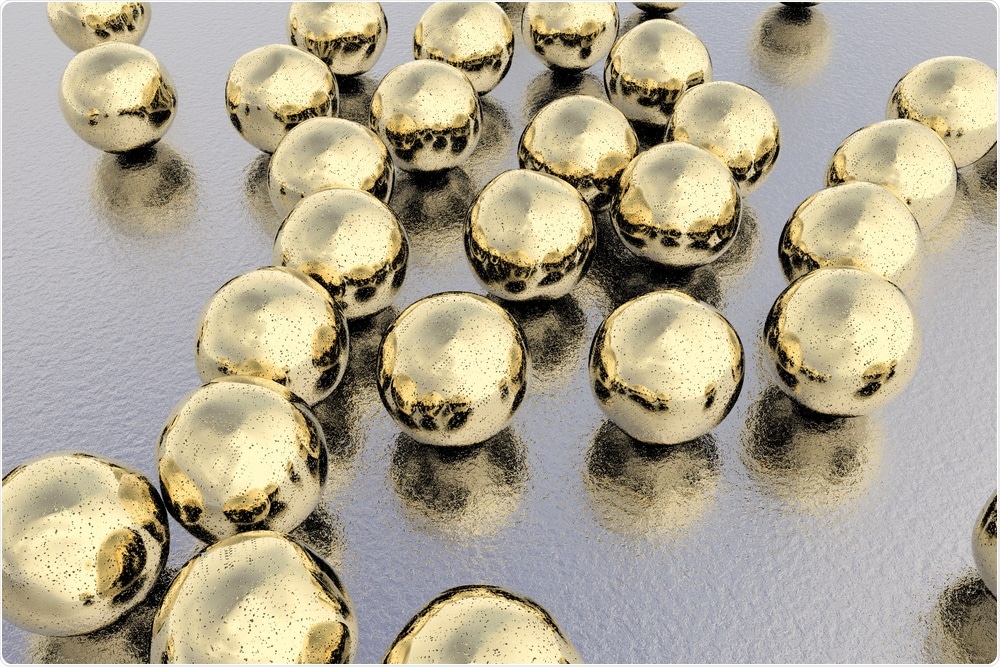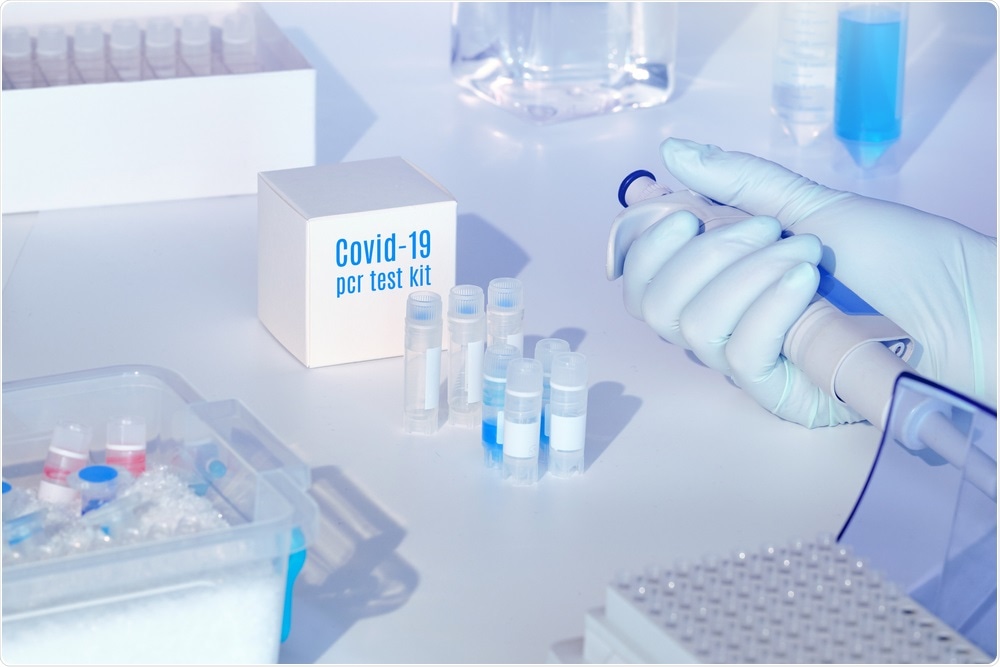We have a research program in place, developing chemical tools to probe glycan-binding proteins and we were working with our industry collaborators, Iceni Diagnostics, in the area of diagnostics.
Many viruses target glycans (sugars) at various points of their infection processes, and we have been trying to develop nanoscience tools to look at this. So, as the COVID pandemic emerged it was obvious for us to focus on this urgent challenge.
.jpg)
Image Credit: MattLphotography/Shutterstock.com
What current tests are available for the detection of COVID-19 and what are their limitations?
The method currently used to diagnose is based on PCR (polymerase chain reaction) which detects the presence of the genetic material of the virus.
The main challenge of this method, which we wanted to provide an alternative to, is that it is (typically) not point-of-care – it needs infrastructure and trained scientists.
Our concept is an easy to use device, that looks like a home pregnancy test, so it is easy to use and low cost.
You have said that rapid detection of the virus is crucial. Why is it so important to have a test that can rapidly diagnose COVID-19?
There are few treatments and no vaccines (yet) for this disease. So the primary tools to control it are hygiene and isolation to stop its spread. The sooner you can identify a case, the sooner the spread can be stopped.
Our aim is to have a test that gives a result in under 30 minutes so could have an application for widespread testing or even at transport hubs, for example.
How did you develop your new diagnostic test for COVID-19?
We have been developing nanoparticle tools to understand and identify glycan-binding proteins for some time. When COVID hit the news we started to do some reading and found papers showing that related coronaviruses (such as those which caused SARS and MERS) had been reported to bind to a class of glycans called sialic acids. The parts of the virus which bind these are from the spike protein which is on the outside of the virus.
We quickly immobilized sialic acids onto the particles and found some candidates which bound parts of the spike protein strongly – this was the ‘eureka’ moment when we become confident we could engineer this into a lateral flow-type test.
We fine-tuned the particles quite a lot, in terms of size, and, crucially, used a polymer coating that stabilizes the particles. We could then show that we can make simplified tests which can bind the protein and using a particle to mimic the virus that we can detect it in a lateral flow test.
Our partners, at Icnei diagnostics, have been investigating the use of glycans in diagnostics for several years so we worked together on this.
How does the test work?
It is actually quite simple (but was a lot of work to get this far!). Basically, we put the glycan (sugar) onto the paper surface, and also the glycan onto a gold nanoparticle. The principle is, that if the virus is present it will bind to the glycan on the surface (concentrating the sample), and the gold particle (which is brightly colored red) also binds, which generates a red line, indicating a positive result.
You can think of it as a ‘sandwich’ where the virus will be the filling, and the two glycan-bearing components are the bread.

Image Credit: Kateryna Kon/Shutterstock.com
Why is it beneficial to use glycans (sugars) rather than antibodies or genetic material to detect COVID-19 in this test?
Glycans are crucial in a vast range of infection processes, and can hence be rapidly tested for binding to create a new sensing tool. Tools like PCR that identify genetic material need infrastructure and equipment, so our approach has the benefit that it is low cost and suitable for point-of-care applications outside of hospitals.
There is a second benefit compared to other lateral flow devices which use antibodies: we believe the advantage of glycans in that they do not require complex cold chains. Unlike most lateral flow devices, our approach does not require proteins for recognition events and hence could be simpler and potentially cheaper.
Can this test diagnose COVID-19 immediately after infection?
The method we are developing targets and detects the virus particles, so in principle, it can detect the virus, so long as it is above the limit of detection.
It is too soon for us to speculate on how soon in the infection cycle it could detect, but other lateral flow systems have very low detection limits so we are optimistic.
What are the benefits of this test compared to other COVID-19 tests available?
The real benefit would be simplicity and speed. We are aiming for it to work with e.g saliva and/or nasal swabs (like with current PCR methods) and no infrastructure at all will be required. We think there is a real need for a very fast test for triaging of people, or for example at transport hubs to identify carriers quickly.
Our test would also be low cost, which is crucial if you want to scale up to very large numbers of people.

Image Credit: anyaivanova/Shutterstock.com
Do you believe that by having a rapid test for the detection of COVID-19, we can reduce the number of people becoming infected by the virus?
I think any (validated) new diagnostic that can help identify infected people sooner would be of huge benefit.
How could this test help society return to normal?
I want to highlight that we have proven that our method can detect the key part of the virus and it is not yet validated on clinical/patient samples. Our vision is that this is a simple, disposable, low-cost device that could be used in locations/situations where a PCR is just not practical.
For example, at an airport to test people before traveling or even at places of work to help limit the spread, especially in asymptomatic individuals.
When could this new diagnostic test be readily available?
When we started this, we want to ensure we worked on a system that had the potential to be scaled up – essentially we have ‘hijacked’ existing tools. This is important, as lateral flow device manufacturing sites are already in place globally, so once we get convincing patient data there are routes to getting this manufactured quickly.
We are at the stage though, like with any disruptive approach, where we need more financial support to ensure we move quickly.
What are the next steps in your research into COVID-19 and diagnostics?
The next step is more testing against primary virus and patient samples. The beauty of our system is that it is fast to change each parameter to optimize it, so we are confident we will make rapid progress in the next few months.
Where can readers find more information?
This is the link to the pre-print describing this work. It is important to note this has not yet been peer-reviewed. https://chemrxiv.org/articles/The_SARS-COV-2_Spike_Protein_Binds_Sialic_Acids_and_Enables_Rapid_Detection_in_a_Lateral_Flow_Point_of_Care_Diagnostic_Device/12465680
Read more about the Gibson group here
Click here to read more about Iceni Diagnostics
About Professor Matt Gibson
Matt has been at Warwick since 2009. He leads an interdisciplinary research team that is spread between the Department of Chemistry and Warwick Medical School. 
The team investigates how biomaterials can be used to understand, or help, various healthcare challenges. This includes new materials to cryopreserve and transport biologic therapies and materials to probe the role of glycans in infection.
He has previously held a prestigious ERC Starter Grant, and (from September) holds an ERC Consolidator Grant and is currently a Royal Society Industry Fellow. His work is funded not only from government sources but also from charities and industry.
In recent years Matt has been actively involved in building industry/academic partnerships in the biomedical space. Before joining Warwick, Matt undertook his degree/Ph.D. at Durham University and spent time as a researcher at EPFL in Switzerland.